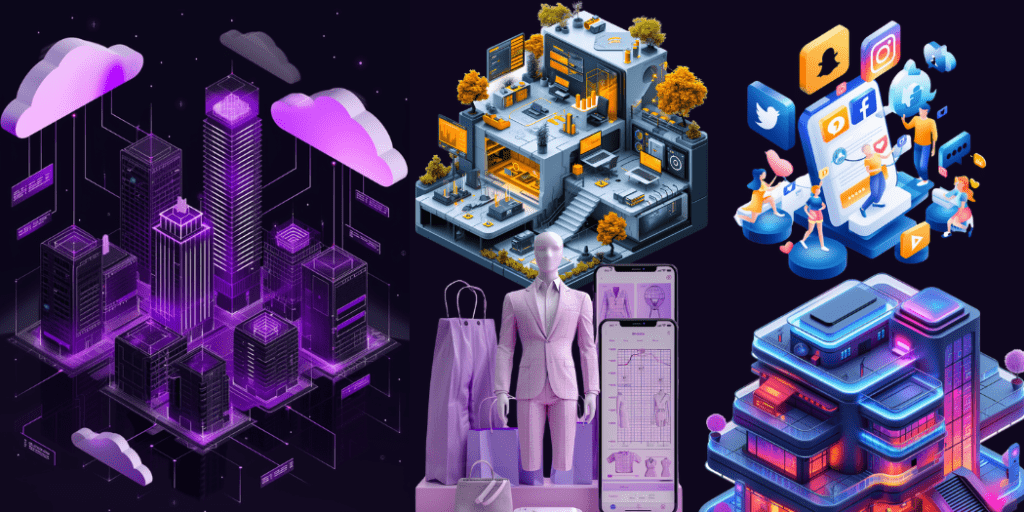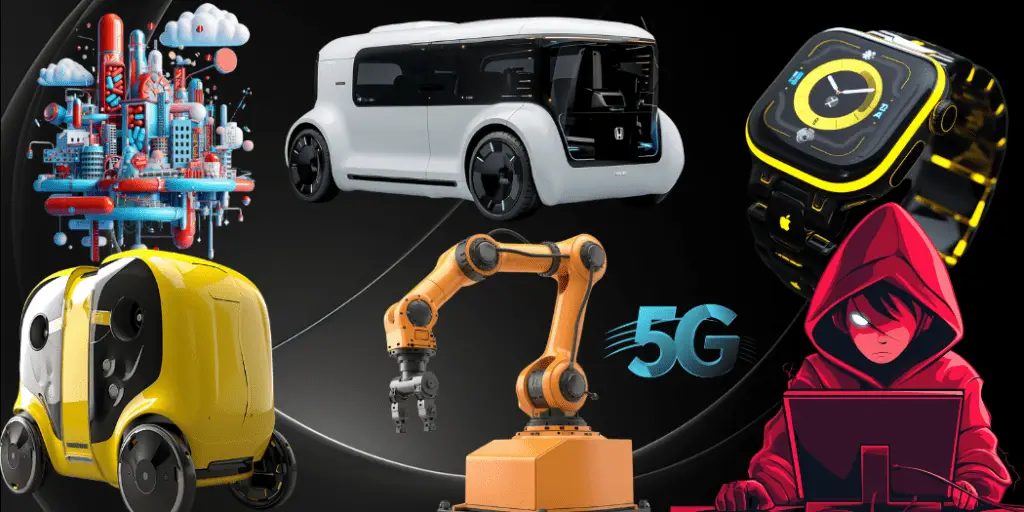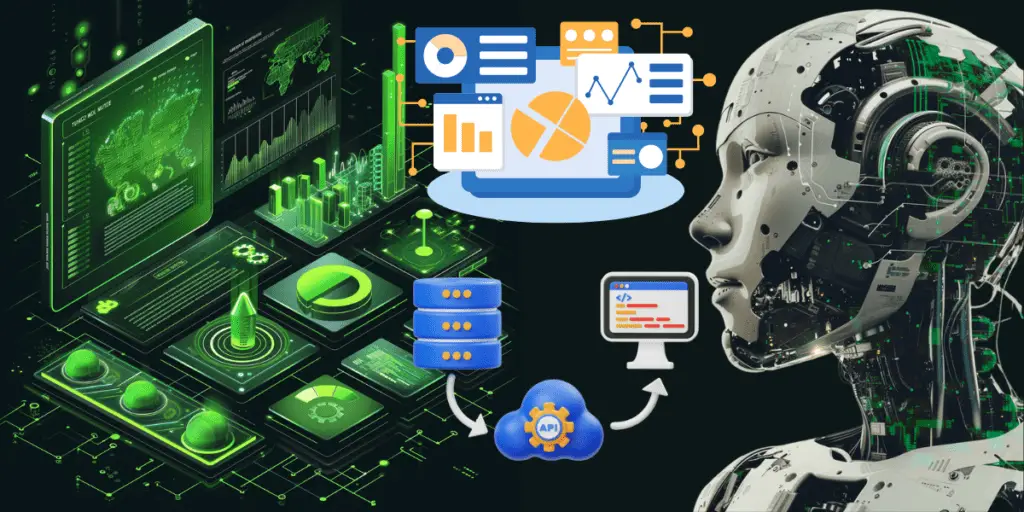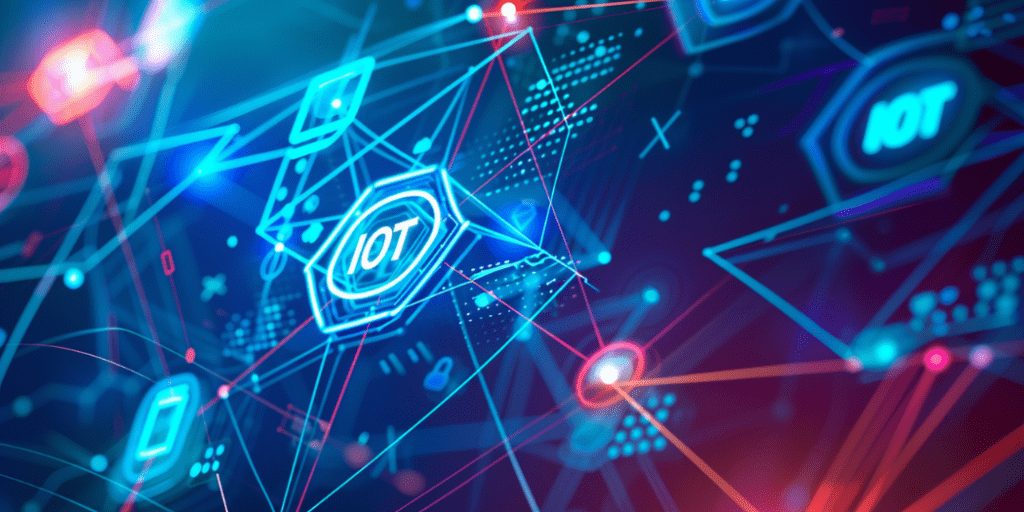Artificial Intelligence of Things represents the convergence of artificial intelligence technologies and the Internet of Things infrastructure.
This powerful combination aims to create more efficient IoT operations, improve human-machine interactions, and enhance data management and analytics.
AI, which simulates human intelligence processes through machines, is widely used in natural language processing, speech recognition, and machine vision applications.
IoT refers to a system of connected devices, mechanical and digital machines, or objects with unique identifiers that can transfer data over a network without requiring human-to-human or human-to-computer interaction.
Examples of IoT devices range from a heart monitor implant to an automobile equipped with sensors for tire pressure monitoring.
By integrating AI into IoT systems, AIoT leverages both technologies’ strengths. AI provides advanced data analysis and decision-making capabilities.
At the same time, IoT offers robust connectivity and data collection from many devices.
This synergy enables AIoT to deliver more intelligent, responsive systems that can adapt and learn over time, ultimately driving innovation and efficiency across various sectors, from smart cities and homes to industrial automation and healthcare.
How AIoT Works
In AIoT systems, AI is embedded into various infrastructure components, such as programs and chipsets, which are interconnected through IoT networks.
Application programming interfaces are crucial in ensuring that all hardware, software, and platform components can operate and communicate seamlessly without any effort from the end user.
When operational, IoT devices create and gather vast amounts of data. AI then analyzes this data to provide valuable insights, improve efficiency, and boost productivity.
This analysis is done through processes such as data learning, where AI systems learn from the data patterns and trends to make informed decisions and predictions. AIoT systems can be set up either as cloud-based or edge-based.
In a cloud-based AIoT setup, often called IoT cloud, data from IoT devices is managed and processed using cloud computing platforms.
Connecting IoT devices to the cloud is essential because it allows data to be stored, processed, and accessed by various applications and services.
The cloud-based AIoT architecture consists of several layers: the device layer, the connectivity layer, the cloud layer, and the user communication layer.

AIoT data can also be processed at the edge. This means the data from IoT devices is processed as close to these devices as possible.
This approach minimizes the bandwidth needed to move data and avoids potential delays in data analysis.
The edge-based AIoT architecture includes layers such as the collection terminal layer, the connectivity layer and the edge layer.
By employing these architectures, AIoT ensures efficient data collection, analysis, and communication, leading to more intelligent, more responsive systems that can adapt and improve over time.
AIoT Architectures
AIoT architectures can be broadly categorized into cloud-based and edge-based setups, each offering distinct advantages and suited for different use cases.
In a cloud-based AIoT setup, data from IoT devices is managed and processed using cloud computing platforms.
This approach, known as IoT cloud, is essential for storing, processing, and accessing data through various applications and services.
This layer includes various types of hardware, such as tags, beacons, sensors, cars, production equipment, embedded devices, and health and fitness equipment. These devices are responsible for collecting data from their environment.
This layer consists of field and cloud gateways, which can be hardware or software elements that link cloud storage to controllers, sensors, and other intelligent devices.
It ensures that data collected by IoT devices is transmitted securely and efficiently to the cloud.
This layer is responsible for data processing via an AI engine, data storage, data visualization, analytics, and data access through APIs.
The cloud layer leverages the power of cloud computing to analyze and interpret large volumes of data, providing valuable insights and facilitating decision-making processes.
This layer includes web portals and mobile applications that enable users to interact with the AIoT system. It provides an interface for users to access data and insights and control the connected devices.
AIoT data can be processed at the edge, which means processing occurs as close to the IoT devices as possible.
This edge-based AIoT approach reduces the bandwidth needed to move data and minimizes delays in data analysis. The edge-based AIoT architecture includes three main layers:
This layer covers a range of hardware devices, such as embedded devices, cars, manufacturing equipment, tags, beacons, sensors, mobility devices, and health and fitness equipment.
These devices are connected to the gateway over existing power lines and are responsible for data collection.
This layer consists of field gateways connecting the collection terminal layer to the edge over existing power lines. It ensures seamless data transmission between the data collection points and the edge processing units.
This layer includes data storage, processing, and insight generation facilities. This approach reduces latency and bandwidth usage by processing data at the edge, closer to the source, while enabling real-time data analysis and decision-making.
Both cloud-based and edge-based AIoT architectures have their unique advantages. Cloud-based setups are ideal for applications that require extensive data storage and powerful processing capabilities.
Edge-based setups are suitable for applications that need real-time data analysis and low latency.
The choice of architecture depends on the specific requirements of the AIoT application, such as the volume of data, the need for real-time insights, and the available infrastructure.
Applications
AIoT’s integration of artificial intelligence and the Internet of Things has led to various innovative applications across multiple industries, enhancing efficiency, productivity, and user experience.
Intelligent cities utilize technology such as sensors, lights, and meters to collect data designed to improve operational efficiency, drive economic growth, and enhance the quality of life for residents.
For instance, intelligent traffic management systems use data from sensors and cameras to optimize traffic flow and reduce congestion.
In the retail sector, intelligent cameras equipped with AI can recognize shoppers’ faces and detect whether items have been scanned at self-checkout stations before customers leave the store.
This reduces theft and improves the shopping experience by minimizing checkout time.
IoT enables smart home appliances to learn from human interactions and responses. These appliances can store and learn from user data to understand habits and provide customized support, such as adjusting heating or cooling systems based on user preferences.
AI and IoT converge in intelligent office buildings to create environments that enhance energy efficiency and security.
Environmental sensors detect the presence of people and automatically adjust lighting and temperature to save energy.

Facial recognition technology controls access by comparing live photos with a database to determine who is allowed entry.
Manufacturers use smart chips to detect when equipment malfunctions or parts need replacement. This predictive maintenance helps reduce downtime and improve overall efficiency.
Human Resources AIoT tools can be integrated with social media and HR platforms to provide AI decision-as-a-service functions for HR professionals, such as screening resumes or analyzing employee engagement.
Delivery Robots Autonomous vehicles rely on multiple video cameras and sensor systems to gather data about nearby vehicles, monitor driving conditions, and look for pedestrians.
Autonomous delivery robots use sensors to collect data about their environment, such as a warehouse, and AI to make traversal-based decisions.
Healthcare and Wearable Devices Medical devices and wearables collect and monitor real-time health data, such as heart rate, and can detect irregular heartbeats.
This data is analyzed by AI to provide insights into a person’s health and alert users or healthcare providers to potential issues.
Collaborative Robots Cobots are designed to assist humans in production, assembly, packaging, and quality control tasks.
They use data from IoT devices and AI tools, including computer vision, to enhance productivity and accuracy in manufacturing environments.
City Brains City brains are advanced systems that promote urban development by combining machine intelligence with real-time municipal data.
These systems process massive logs, videos, and data streams from various sensors across a city to detect issues like illegal parking, road accidents, and traffic light changes, thereby improving urban management and safety.
Benefits
AIoT devices can analyze data in real time to reveal patterns and insights, enabling systems to adjust their operations dynamically for improved efficiency.
This capability is especially beneficial in industries such as manufacturing, where predictive maintenance can significantly reduce downtime and increase productivity.
AIoT systems can generate and analyze data continuously, identifying potential failure points and making necessary real-time adjustments.
This capability allows businesses to maintain smooth operations and quickly adapt to changing conditions without significant human intervention.
With AIoT, employees can spend less time monitoring devices and focusing more on strategic tasks.
AI-powered analytics can process vast amounts of data from IoT devices, providing valuable insights to inform decision-making and optimize business processes.
AIoT systems are highly scalable, allowing businesses to increase the number of connected devices to optimize existing processes or introduce new features.

This scalability is crucial for growing enterprises expanding their operations and capabilities.
AIoT represents a significant advancement in AI and IoT technologies. AI adds value to IoT through machine learning capabilities and improved decision-making processes.
At the same time, IoT enhances AI with connectivity, signaling, and data exchange. They create systems that can improve businesses and services by extracting more value from IoT-generated data.
IoT devices can be vulnerable to security risks. However, AI can identify and mitigate these risks by analyzing sensor data to discover anomalies and potential security breaches.
AI can analyze security camera footage to spot suspicious activities and notify security personnel.
Human error can lead to significant financial losses for businesses. By integrating machine learning with IoT technology, organizations can effectively mitigate mistakes.
AIoT systems analyze information at its source, minimizing data movement and reducing the number of intermediaries involved, thereby decreasing the chances of errors.
IoT devices can gather detailed information about user preferences and behaviors. AI can use this information to tailor user experiences further.
The benefits of AIoT extend across various sectors, driving innovation and efficiency.
Challenges
The increasing number of connected devices in AIoT systems heightens the risk of cyber attacks and security breaches.
Each connected device can be a potential entry point for hackers, making robust cybersecurity measures crucial.
Ensuring secure communication, data encryption, and regular security updates are essential to protect AIoT systems from threats.
Combining AI and IoT technologies is inherently complex and requires specialized knowledge and skills.
The integration process involves harmonizing various hardware components, software applications, and network protocols, which can be challenging and time-consuming.
Businesses must invest in skilled personnel and comprehensive integration strategies to successfully deploy AIoT solutions.
AIoT systems generate and collect vast amounts of data from various sensors and devices. Managing this data effectively requires robust data storage, processing, and analysis capabilities.
Businesses need to develop efficient data management strategies to handle the volume, velocity, and variety of data generated by IoT devices.
Implementing AIoT technologies can be expensive due to the need for specialized equipment, software, and personnel.
The initial setup costs and ongoing maintenance and operational expenses can be a significant financial burden for businesses and small and medium-sized enterprises.

Cost-benefit analysis and strategic investment planning are necessary to justify and manage these costs.
The data collected by AIoT devices often includes sensitive and personal information. Ensuring the privacy and confidentiality of this data is critical to avoiding privacy violations and building user trust.
Businesses must implement stringent data protection measures and comply with relevant regulations to safeguard user data and maintain transparency in data handling practices.
AIoT systems must be highly reliable and resilient to function effectively in real-time applications. Any failure in the system, such as a malfunctioning device or a network outage, can disrupt operations and lead to significant consequences.
Ensuring the reliability and resilience of AIoT systems requires robust design, regular testing, and proactive maintenance practices.
As businesses grow and the number of connected devices increases, AIoT systems must be scalable to accommodate this growth.
Scaling AIoT solutions involves addressing challenges related to data management, network infrastructure, and processing power. Businesses must plan for scalability from the outset to ensure their AIoT systems can expand seamlessly.
AIoT systems often involve various devices from different manufacturers, each with communication protocols and standards.
Ensuring interoperability among these diverse devices is a significant challenge. Developing and adopting common standards and protocols is essential for seamless integration and communication within AIoT systems.
The production, deployment, and operation of AIoT devices can have ecological impacts, including energy consumption and electronic waste.
Businesses need to consider the environmental footprint of their AIoT solutions and adopt sustainable practices, such as energy-efficient designs and recycling programs, to minimize these impacts.


